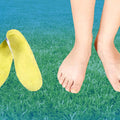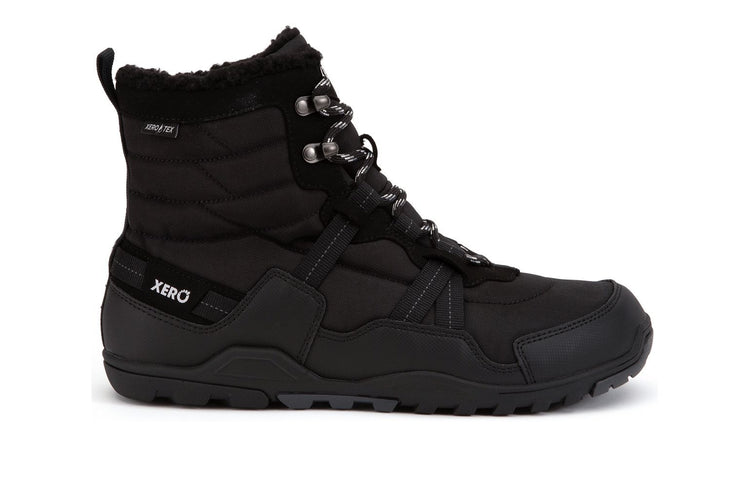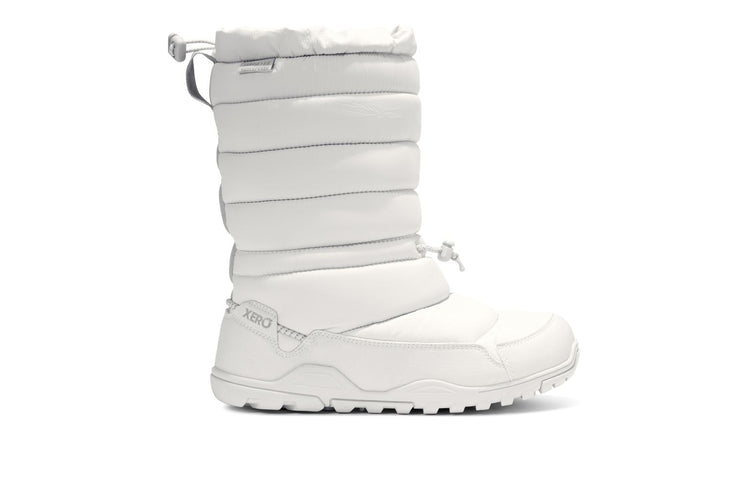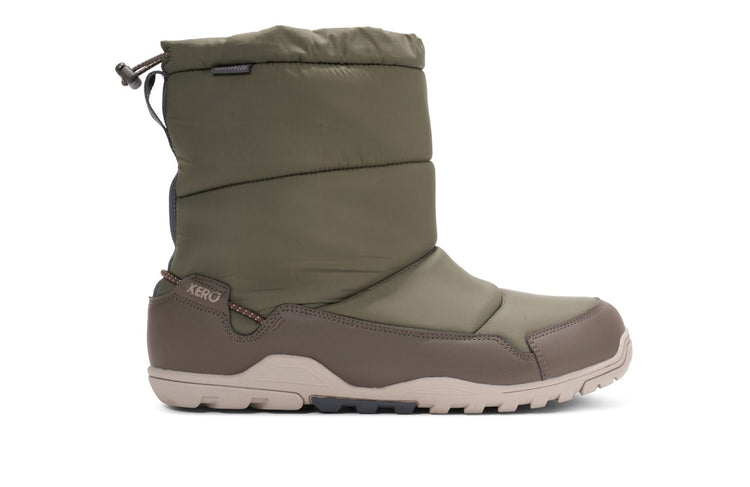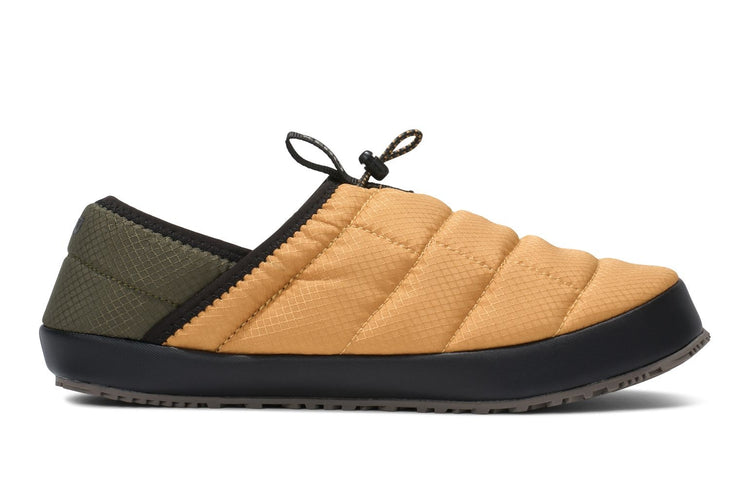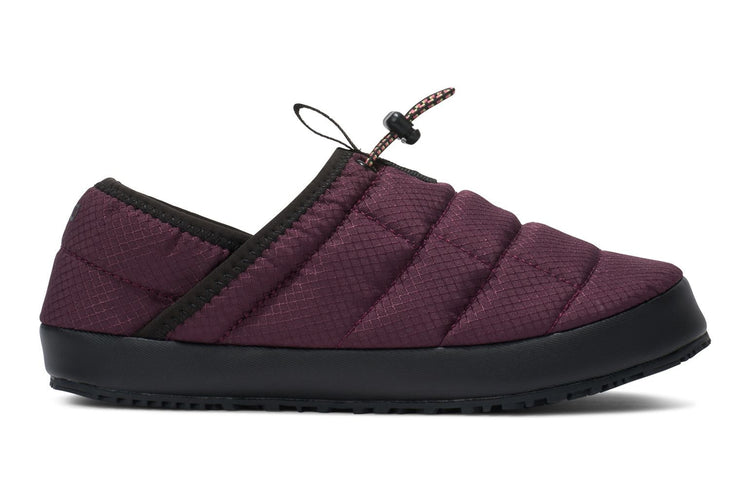latest News
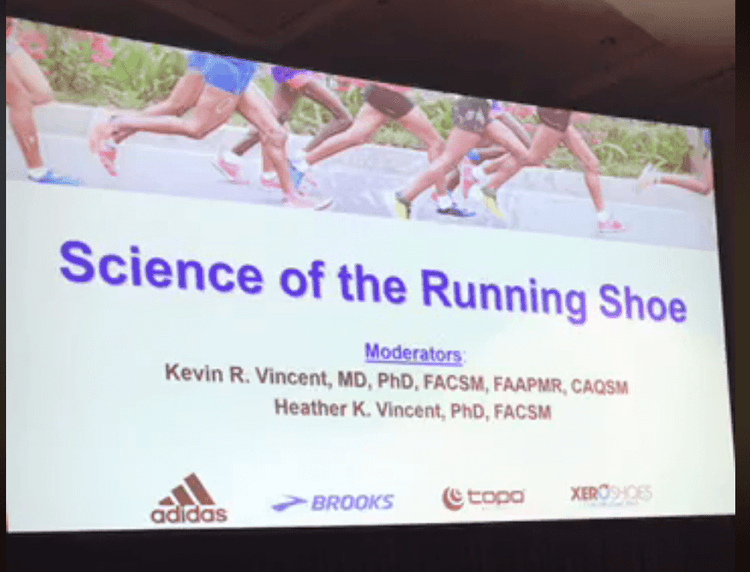
Xero Shoes compared to "Big Shoe"
On Friday, at their national conference, the American College of Sports Medicine hosted a panel discussion about the Science and Biomechanics of Footwear featuring representatives from Adidas, Brooks, Topo Athletic and then, me, Steven, from Xero Shoes.The room was PACKED -- the highest turnout of any event at the conference.I don't want to say too much about the discussion -- watch it below. But you'll notice that the Brooks and Adidas presentations never say that their footwear reduces injury or improves performance, despite that being one of their goals.Big Shoe companies have had almost 50 years to improve over the simple footwear humans have worn for thousands of years, but it doesn't seem the have.On the other hand, research is showing the value and benefits of natural movement in truly minimalist footwear (which isn't the same as footwear that calls itself minimalist, but isn't really).Here are a few points I wanted to make, but didn't get to:I wanted to show how your arch is strong when you let it work, but gets weaker when it's supported, like I did here.I wanted to say that you don't need a transition shoe, you just get in something truly minimalist and then build up slowly. If you go to the gym, you don't get stronger by doing bicep curls and only lifting the weight 1"... you go through the whole range of motion, first with a light weight, and then with more and more weight and more and more sets and reps. Same thing with getting used to natural running and walking.I wanted to say that we know speed is a function of "mass specific force." If you have identical twins who run with the same form, the one who applies more force into the ground will be faster. We don't know someone can apply MORE force, but we know how they can apply LESS: spread the force over more surface area, or apply the force more slowly. The one thing that ALWAYS spreads force and slows it down is cushioning.I wanted to point out that it won't matter if you make custom-made, 3D printed shoes, if you're using the same fundamental design -- high heels, flared soles, stiff soles, and pointy toe boxes. In the last 50 years, there have been hundreds of "new technologies" in footwear... where are they now? Custom-made and 3D printed soles are just the latest in the same ideas that, again, have never been shown to be helpful.I wanted to tell the story I was told (by someone who worked with Bill Bowerman) about why Nike started making high-heeled excessively padded shoes.I wanted to explain how just putting a higher-heeled shoe on your foot MAKES you overstride and heel strike, and that landing on your heel is unstable, which is why you then need to correct this with motion control, and that overstriding leads to landing with your arch flattened out and weak, which is why you then need to add arch support (which just weakens your feet more). In other words, most of the technology in shoes is there to correct for a problem that the original shoe design seems to have caused.Needless to say, I could have said a lot more, had we the time. Rumor has it we may have Round 2 of this conversation at another sports medicine event. I can't wait.
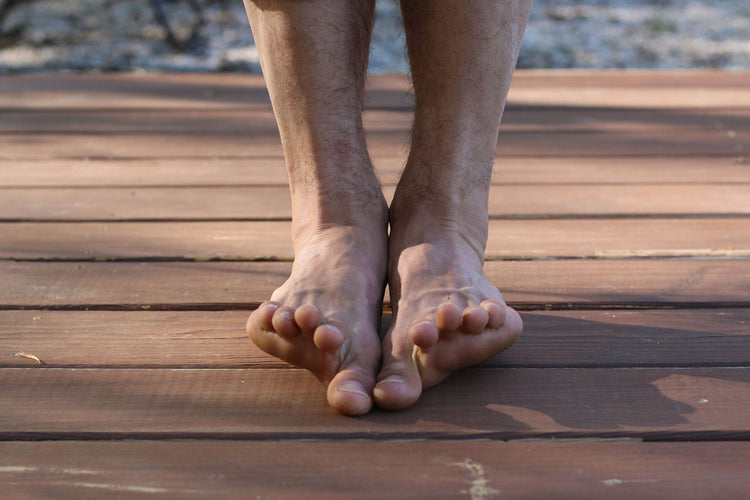
4 Exercises to Strengthen Your Feet
4 Exercises to Strengthen Your Feet (And Ankles) This article was recently updated on April 10, 2023 I’ve always been a fan of shoes as a fashion statement. However, when looking cool or sexy becomes the priority over feeling good, we have a problem. It is no secret nowadays that the health of our body directly affects how we think and feel. The last 10 years of my life have been dedicated to helping others feel good in their body and mind. When it comes to feeling good, I always start with the feet. Why Are Foot Strengthening Exercises Important? Many of us know how to stretch and strengthen our abs, chest, shoulders, thighs, and buttocks. But what about the feet and ankles? Feet are the foundation of our posture, but they are often ignored at the gym. You can improve your overall well-being by practicing a few main joint movements of the ankles and toes. Further down I will go over a few daily exercises to improve your health from the ground up. Your Feet Affect Everything When I teach yoga - especially my hip-focused workshops, I spend 20% of the time on the feet and ankles. The health of your feet directly affects all of the muscles and joints above, including the hips, knees, and lower back. "Supportive" Shoes Are Only A Quick Fix I always find it comical that modern medicine provides these solutions for your foot problems: Shove a sole into your shoe to lift your arches for you Find shoes that articulate your ankles for you while you walk Don't get me wrong, there is a time and place for these quick solutions. However, they are not a long-term solution that will make your feet stronger. Here is an analogy of what short-term solutions do to your body. Pretend that your body is a lazy employee at work, and your doctor is the manager. The manager can either: Teach us how to be productive and inspire us to take action Simply do the work for us and teach us nothing Firing the employee is not an option - you only have one body, after all! The best option, of course, is the one that is better for us in the long term. However, most of us don't actually take the time to support our overall well-being. If you're reading this, you probably aren't a "lazy" human being. You are looking for solutions and answers, and you are willing to do the work. This is why you have chosen to wear barefoot shoes from Xero Shoes, isn't it? You want to take care of your long-term foot health! So, let's get into building strength. How Can I Make My Foot Muscles Stronger? In order to get stronger feet, let's take a look at the four main actions of the ankle. Dorsiflexion Dorsiflexion is what we commonly refer to as flexing the feet. Stand on two feet and bend your knees, lean forward till your knees move forward. You’ll see the skin at the front of your ankle wrinkles, this action is called dorsiflexion of the ankle joint. Plantarflexion Plantarflexion is the exact opposite of dorsiflexion, and it is commonly known as pointing your foot as a ballet dancer would. Inversion Sit down with your legs out in front and turn the soles of your feet toward each other like you are making “prayer” feet. This is called inversion or inverting your ankle. Note, you may sit up on blankets or a couple of pillows if your hamstrings are on the tighter side. Eversion This is the opposite of inversion and is usually the most challenging. Stand up again, press the big toes down, and pull the outside edges of your feet up. You will see wrinkles form in the outer ankle, and you will feel the muscles along your outer shin engage. What Feet Strengthening Exercises Work? The following foot strength exercises will help to strengthen your muscles so you can perform the actions above: 1. Seated Plantar flexion Sit down with your legs in front. Plantar flex and relax your ankles repeatedly with straight knees. You are trying to activate your calf muscles. Keep your feet everted by squeezing the inner ankles together. If you need to, you can use a yoga strap to help with the range of motion. Try without the strap as well to build up your foot strength. 2. Seated Dorsiflexion This action is the opposite of the first exercise. Sit down with your legs in front and pull the tops of your feet back. Release and repeat three times or more until you feel the heat building in the top of the shins. These muscles are your tibialis anterior muscles. 3. Calf Raises Stand upright with your feet flat on the floor. Plantar Flex your ankles until your heels lift. Try not to let your ankles roll outward during these. The target muscles here are called the gastrocnemius and soleus muscles. To keep the ankles from rolling forward, you'll be using the muscles of the outer shins. 4. Inversion and Eversion Practice the inversion and eversion techniques described above. These exercises are the ABCs for your feet and ankles. Do them daily before getting out of bed to wake up all the muscles in your foot and ankle. Bonus: The Toes Take your foot exercises up a notch by spreading your toes. Also known as abduction, and you can do this either with a toe spreader or using your fingers to separate the toes. With time and repetition, you will be able to use your muscles to spread your toes. Until next time, Matt Giordano, aka @TheYogiMatt The information in this post does not take the place of medical advice. Only your doctor can provide advice, diagnosis, and treatment. Talk to your doctor or physical therapist if you have questions about your health.
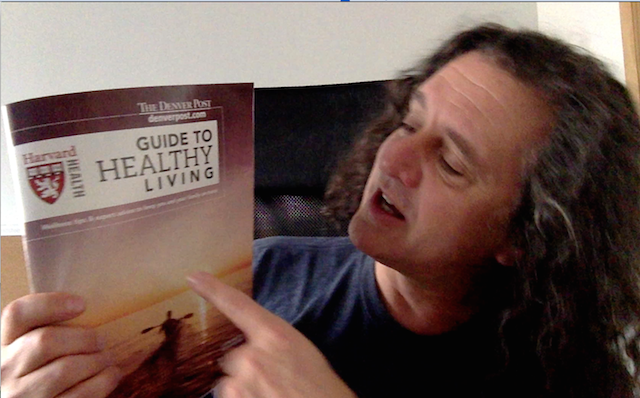
Harvard's Guide to Healthy Feet - Are you doing what they say?
Our local newspaper, the Denver Post included an insert, The Harvard Health Guide to Healthy Living. Lots of great info in there, but my favorite is the section, Keeping Your Feet Healthy. What does it recommend? Check out this video for a few highlights and my commentary. And if you want to read the transcript instead of watching, it's below the video. What do you think? Are you doing what Harvard recommends? Add your comments, below. Download the article here Transcript Hi, Steven Sashen here from xeroshoes.com to talk about something that I got in the newspaper as an insert the other week. It is the Harvard Health Guide to Healthy Living. There's a lot of great information in here but there's one section that I really want to talk about, and let's take a look at that, shall we? It's the "Guide to Keeping Your Feet Healthy." Now, in this guide to keeping your feet healthy, there are a couple of highlights that I really want to point out and here's the first one. Read down here under Foot Fitness, “Exercising your feet on a regular basis not only improves overall foot health but may reduce your risk for injury,” and here's the highlighted part, “Walking is the best overall foot exercise. When you walk, you put your foot through its full range of motion from the time your heel hits the ground until you lift off with your toes.” Okay, first of all, love the idea of putting your foot through its full range of motion, love the idea of walking, have a big issue with that phrase “heel hits the ground.” You don’t want your heel to hit the ground. You want your heel to contact the ground. You want to use your foot. You want your heel to touch the ground but you don’t want it slamming down. So what you end up wanting to do, what you actually want to do, is have your foot land kind of underneath your body rather than way out in front of your body. If you reach way out with your foot, you'll slam your heel into the ground and that'll cause what’s called an impact transient force spike through all of your joints. What you want to do instead is let your foot land underneath you. You may be a little flatfooted, you may land on your midfoot, you might even land on your forefoot – suffice it to say, you don’t want to slam your heel. You don’t want to hit your heel. You want your heel to contact the ground naturally. Now, the next part, “letting your foot go through its full range of motion.” In order for your foot to go through its full range of motion, you need a shoe that lets your foot go through its full range of motion. If you have a stiff shoe with a really high heel, it can't go through its full range of motion. With a high heel, your heel’s already way up and you don’t get that plantar flexion. You don’t get that toe coming towards your knee that is part of the full range of motion in your ankle. And if the shoe itself is stiff, your foot can't move properly. You have one-quarter of the bones and joints of your entire body in your foot and ankle and you want to have a shoe flexible enough to take advantage of that. So for example, our Xero Shoes. This is our Xero Shoes Prio. It is a running fitness shoe. People use this for road-running, trail-running, CrossFit, yoga, gym-going, pretty much anything you can think of. Of course, casual wear as well. And when it comes to not elevating your heel so that you can get that full range of motion and the plantar flexion—you can see the heel is not elevated—when it comes to letting your foot bend, move and flex naturally, well, let's just do this. Yeah, that'll do it. And that amount of flexibility is not unique to our Prio. All Xero Shoes do that. This is our Z-Trail sandal. Think Chaco, Teva, Keen, but this thing weighs one-quarter as much and is much, much thinner and, as you can see, does that same crazy flexible rolling thing that lets your foot move through its full range of motion. Even our casual shoes—this is our Hana men’s casual canvas shoe—same thing, just as flexible as all Xero Shoes because natural foot motion is so important to us. Thank you, Harvard, for telling everyone else that it's important for them as well. Alright, let's go into the next point: “Basic steps to help prevent many foot problems – buy shoes that fit well with low heels and plenty of room for your toes.” Well, I already talked about the low heel part. Not only are Xero Shoes a non-elevated zero-drop heel, but they're also non-elevated. This is a low-to-the-ground sole for balance and agility. You might hear about some shoes that are zero-drop—means they don’t elevate your heel, which messes with your posture—but they're still an inch, two inches off the ground. You don’t want that. You want something low to the ground for balance and agility. And when it comes to plenty of room for your toes, think about most of the shoes that you have that are pointy and squeeze your toes together – Xero Shoes, on the other hand, have a nice wide toe box so your toes can spread and relax and splay and move naturally. And again, true on our sandals, true on our casual shoes. It's one of the core principles we believe in, is natural fit, letting your toes bend, relax, flex, and splay naturally. Let's take a look at the last point: “Make sure your shoes provide enough support but allow your feet to breathe.” Okay, let's talk about support. Many people think they need arch support. "You must have arch support." You go to a doctor and he'll tell you, that if you have any problem, you need arch support. Well, what does support actually do? It actually stops your foot from moving. Go back to that putting your foot through its full range of motion. When you have something supporting your arch, it can't actually move through the full range of motion. More, think about the idea of support in general. You're keeping the foot from moving. You're basically putting it in a cast. Imagine putting your arm in a cast. When it comes out of the cast, it's not stronger, it's not healthy, it's not flexible. It's weak. It's atrophied. In fact, there is a company that had a trade show booth next to us. They made insoles for your shoes and they had a drawing of a bare foot and then a drawing of a bare foot with their insole thing, and it said “37% less stress, instantly!” And I said, “By stress, are you measuring muscle activation with an EMG, an electromyograph?” And they said, “Well, yes,” very proudly. And I said, “So what you're saying is, the moment I step on that insole of yours my muscles are working 40% less, so I'm getting almost 40% weaker just by standing on that insole. Wouldn't it be better if I had 100% less stress by putting my foot in a cast or a foot coffin and never moving it at all?” and they did not have a good answer for that. An arch — think about it — architecturally, it is the strongest structure there is. You can put enormous amounts of pressure on it from the top and it's totally stable. What makes an arch fall apart? Supporting it, pushing it up from the bottom, the whole thing falls apart. You don’t need arch support, 99.9% of people. You don’t need arch support. You need strong arches. Whether you have flat feet or high arches, strength is the important thing, not support. And the way you get strength? Let's go back to where it says walking is one of those best forms of exercises. Move your foot through the full range of motion. Running, too, as long as you can move your foot through its full range of motion. So that's my little rant about support. And let's talk about breathing. Breathing isn't just about having a breathable upper so that you can get air in there, which these have. It's just about letting your foot have the space to move. That's why “breathe” is in quotes. And again, nice wide toe box, nice and wide across the midstep as well, or the instep as well. So Xero Shoes are designed so that you get a great comfortable fit that lets your feet move naturally. So that's the basic thing I wanted to share with you. I want to thank Harvard for putting out the Harvard Guide to Health Living and for having people who are wonderfully smart and talk about actually using your feet naturally instead of binding them up in foot coffins and having them get weaker and weaker over time. If you have any questions, drop us a line or check out Xero Shoes at xeroshoes.com. And as we always love to say, Live Life Feet First" The content of this post does not constitute and is not intended to be a substitute for professional medical advice, diagnosis or treatment. Always seek the advice of a physician or other qualified health provider with any questions or concerns you may have about your health or a medical condition.
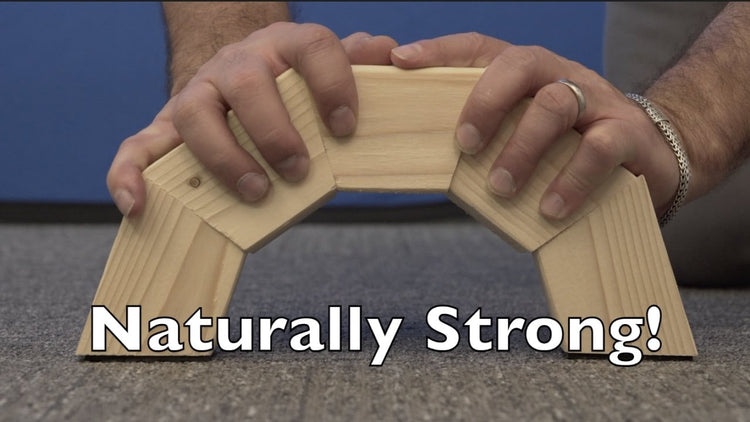
No support for support?
We've said it before and we'll say it again:Support makes you weakThink about it. You break your leg. You put your leg in a cast for 8 weeks. What does it look like when it comes out? Stronger? Nope. Weak and atrophied. Same thing with feet. If you "support" them and don't let them bend and move and flex and feel, you may as well have them in a cast.Xero Shoes are made to let your feet be feet... to move, to bend, to flex, to feel. So you can...Live Life Feet First! Click here to find your new favorite footwearThe content of this post does not constitute and is not intended to be a substitute for professional medical advice, diagnosis or treatment. Always seek the advice of a physician or other qualified health provider with any questions or concerns you may have about your health or a medical condition.
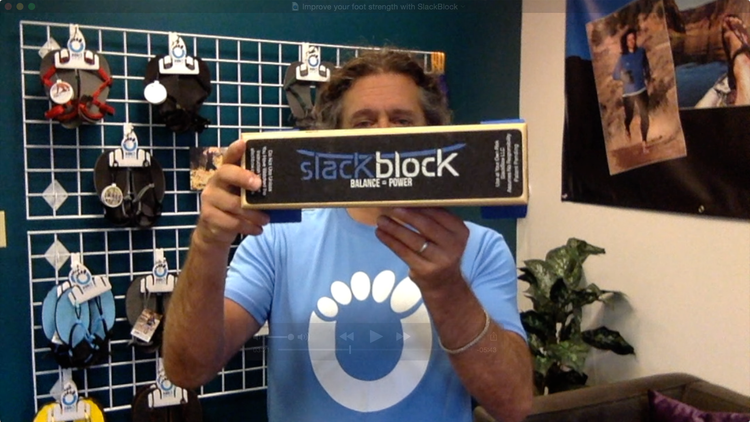
Improve your foot and ankle strength and your balance
If you want to improve your foot and ankle (and leg and hip!) strength -- and you do -- then you need to see this video.In it, I share something I've never made public before, a very personal story about why strength and balance are so important to us at Xero Shoes. But I also share a new tool you can use to improve your strength and balance in just a few, fun, minutes per day.There are 2 products I'm recommending HIGHLY:One is the AFX Foot Strengthener (a video about AFX is on the way)The other is the Slackblock (that's what this video is about).The content of this post does not constitute and is not intended to be a substitute for professional medical advice, diagnosis or treatment. Always seek the advice of a physician or other qualified health provider with any questions or concerns you may have about your health or a medical condition.
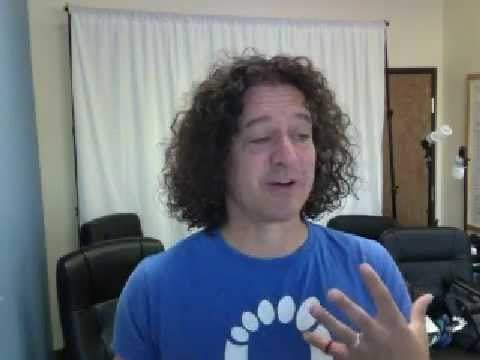
Barefoot Running Q&A - Transitioning, pain, and cold weather
Here's another Barefoot Running Q&A video, where I take an email I've received and give an answer on video.In this video we look at the relationship between barefoot and minimalist shoes, foot and calf pain during the transition to barefoot, how minimalist shoes fit in with the transition to bare feet, and how to handle the cold.Some of the links you'll want to take a look at:Transitioning to Barefoot RunningIs Calf Pain NecessaryDealing with "top of foot pain."Barefoot running and cold weather
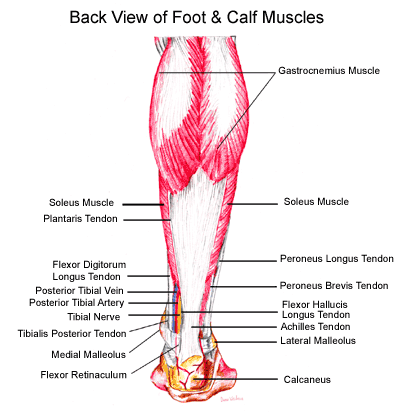
Does Barefoot Running Cause Calf Pain? - Xero Shoes
People making the transition to running barefoot or in minimalist shoes sometimes experience calf pain or even calf injuries. They can also feel pain in their Achilles tendon.I have talked with plenty of people who assume this kind of pain is just part of the transition process from running in typical running shoes to running barefoot or in minimalist shoes.If you’ve heard this, too, I have good news for you:Pain isn’t a necessary part of the process!I like to say “calf and Achilles pain is optional” (if you know what to do).I am going to first give you an overview of why runners might experience calf pain in the first place before turning to barefoot running and why I think the conventional wisdom here is wrong.Why We Get Achilles Tendon and Calf Pain when RunningYour calf has a set of muscles (including the gastrocnemeus and soleus muscle) that connect to the Achilles tendon and provide both the power for pushing with your foot, as well as controlling how your heel comes down to the ground if you land on the ball of your foot.The most basic reason runners experience calf pain is overworking the muscles and tendons.This can happen for a variety of reasons. In some cases, it is because they were used to apply an amount of force the muscles are not used to. For instance, if you’re used to running on flat surfaces but then go for a run on a hill, your calf muscles are going to be working a lot harder than usual. This can also happen with a sudden increase in distance.In other cases, it isn’t that the force is too much but that it goes on for so long. To put it differently, the muscles are pushed past their point of endurance.Sometimes, a runner’s calf muscles have simply been asked to work before a proper warm up or stretch. Tight calves that are suddenly put to work places a lot of strain on the muscles.Whatever the reason, pain is your body’s way of telling you that your muscles need a rest, and that you probably need to use your calves differently once you’re feeling better.Sore calves are a normal effect of exercise and nothing to worry about. Severe calf pain, on the other hand, is an indication of a more serious problem. If you overwork your calf muscle, you risk injuries like a calf strain or even a calf tear. Muscle tears are painful and can require a long recovery process.In short, then, tendon or calf pain is an indication that you’ve overdone it in some way.Why People Assume Calf and Tendon Pain Are Just Part of Barefoot RunningWhen you run barefoot, you run differently than if you’re in typical shoes (get tips on how to run barefoot here). Generally speaking, runners who are used to thick, modern running shoes will tend to land heel first with their foot contacting the ground well in front of their body.Once making the switch to either no shoes or minimalist ones, most runners will probably stop landing that way. Why? Because it hurts to land on your heel!Instead, barefoot runners will tend to adopt a mid-foot or fore-foot strike pattern, landing with the heel initially off the ground. In that running form, the calf muscles act as shock absorbers, controlling the speed with which your heel comes down to the ground (or near it). This “eccentric” or “negative” loading can place greater demands on calf muscles and tendons than they used to.It makes sense, then, that transitioning to barefoot-style running could lead to overworking of the calf muscles and therefore to calf pain and soreness.Most people think the issue is that the calf muscles are too weak because of previous underuse and the solution is to make the calf muscle stronger.In other words, people believe that calf and Achilles soreness is practically inevitable when you try running barefoot, and that building strength is the eventual cure.But that story is missing something important.Why Calf and Tendon Pain Are AvoidableI say that it is missing something and not that it is totally wrong.It is true that barefoot running usually means a new (and more natural) running technique that can place more demands on the calf muscle.But this doesn’t need to lead to calf pain when running.The most common problem many runners have when they begin to run barefoot is that they simply use more effort than necessary when they run.Consider that there are two ways to keep your calf muscles from being overworked: to have stronger muscles for a given amount of work or to reduce the work required. Runners usually assume they need to do the first thing – build up their calf muscles with strengthening exercises.From what we’ve seen, having heard from tens of thousands of new-to-barefoot runners, the “secret” to reducing your odds of having calf pain is to do less and relax more.So let’s take a deeper look at this other option: to prevent calf pain or calf injury by reducing the amount of work you ask your calves and Achilles to do.The Common Mistakes Barefoot Runners MakeOkay, so how do we do less and relax more?It all comes down to form.New barefoot runners often have two other habits that put unnecessary strain on their muscles and tendons, putting them at risk of calf muscle injuries:Overstriding while landing on the mid-foot or ball of the footMost new barefooters hear that you should land on the ball of your foot, or on your midfoot.It’s true. BUT, the mistake many make is using the same form they have in regular shoes – landing with their foot in front of their body (“overstriding”), and then merely pointing their toes.When you land with your foot further in front of your body, you’re basically “putting on the brakes” which puts excessive force on your foot.If you point your toes to land on your forefoot, you use your calf and Achilles to decelerate and this amount of force is more than most people’s calves can handle. In fact, it’s more than the bones of your foot are made to handle so you’re also risking a stress fracture.Sure, getting freakishly strong may make that easier to do, but the correct solution is to “stop putting on the brakes” when you land by stopping your over-striding and, instead, placing your foot more underneath your body when you land.By not applying that breaking force, your calves don’t have to do as much work.One way to learn to land with your foot underneath you is by increasing your cadence – the number of steps you take per minute – without running faster. This quicker cadence makes it harder to overstride.There’s actually a recent study on this. Researchers found that runners with a history of recurrent calf strain injuries land with their heels further away from their center of mass.Pushing OffSimilarly, if you remove your foot from the ground by pushing off with your toes, you’re essentially doing bodyweight calf raises every time you take a stride… and even a short run would be more than your body can handle.Again, the solution isn’t to hit the gym to lift weights or cross train to improve your calf raise strength. It’s to LIFT your foot off the ground (instead of pushing) by flexing at the hip.I know that sounds weird, so let me give you an image to help it make sense:Imagine what happens if you stepped on a bee and it stung your foot… you wouldn’t try to push away from the ground since that would drive the stinger further into your sole. You would reflexively (faster and easier) pull your foot from the ground with a hip flex.You want to use that same hip flex to get your foot off the ground when you run. You’re still using your calf muscles, but not nearly as much as you do by “toe-ing off.”How to Find the Right Running Style that Won’t Lead to Tendon or Calf StrainIn order to use less effort, you’ll probably have to start with less running.That’s fine.Even when you make the adjustments I just described, barefoot running will have you using your lower leg muscles in new ways that will take some time to get used to.The key thing at this early stage to prevent calf injuries is to be patient and listen to your body. Calf tightness isn’t something to worry over. Make sure you are warming up with some calf stretches to keep loose.On the other hand, sharp pain in your feet or calves, shin splints, calf strains — these are all clear messages from your body that something isn’t right. You may even find that you are getting calf pain in your left calf but not your right calf. That can be an indication that you are getting it right with one leg but not yet the other.If you are willing to take it slowly and make adjustments, it is just a matter of time before you find the running form that will feel easy and fun.And you’ll find that you will be able to run your usual distances and times sooner than you think.By the way, it isn’t just calf pain that is a potential issue. Running injuries like plantar fasciitis and shin splints are common, and researchers suggest an important risk factor is increases in the volume or pace of training. Injury prevention requires respecting your body’s limits.By the time you figure everything out, you will probably have gained any extra strength you need.Barefoot Running…in Shoes? I have mentioned minimalist shoes in this article about running barefoot and calf pain. Maybe that confused you. If so, let me explain.Barefoot running is all about recovering a natural running form that allows our bodies to function the way they are designed. It seems obvious that doing what’s natural is better for our bodies. It’s also a lot more fun. It’s really more about how your feet move than about what you have on them.It’s about the form, not the footwear.There is a relationship between the two, however. Minimalist shoes (also called barefoot shoes) are designed specifically to give you the flexibility and feedback that let you maintain natural movement without you having to walk around in bare feet. So you can absolutely try barefoot walking or running without having to ditch footwear, as long as it’s the right footwear.We’ve put together a handy tool to help you find the perfect pair of barefoot shoes (or sandals) for you. Why not have a look?The content of this post does not constitute and is not intended to be a substitute for professional medical advice, diagnosis or treatment. Always seek the advice of a physician or other qualified health provider with any questions or concerns you may have about your health or a medical condition.
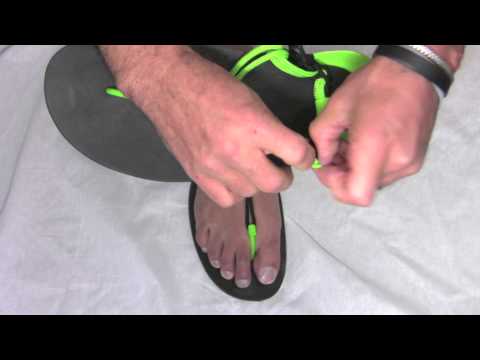
How to Adjust the Xero Shoes Sandals for a Perfect Fit
To get a just-right fit for your sandals, follow the instructions below. And if you need more help, feel free to reach out to our Customer Happiness Team at 303.447.3100 or support@xeroshoes.com For all of our sandals, you want to aim for "snug but comfortable." Z-Trek, Z-Trail and Naboso sport sandals Aqua Cloud and Genesis huarache-style thong sandals Veracruz sandal Shortening the laces on the Aqua Cloud and Genesis If you tighten your heel lacing and end up with "too much lace", you can shorten the laces by following these instructions:
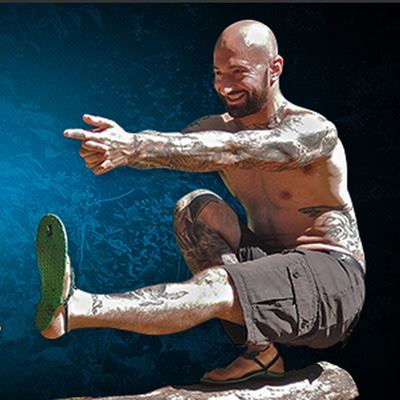
Fitness Guru Al Kavadlo chats with Xero Shoes
I met (online) Al Kavadlo over 3 years ago and was really impressed with what he was teaching and how well he practiced what he preached. Al has been a big fan of Xero Shoes, sending us photos of him running through the streets of New York, across the Brooklyn Bridge, and performing all manner of impressive bodyweight exercises in his Xeros. Al is a master of body weight training and has put together some of the best coaching I've seen on that topic... something that we both agree every runner could benefit from. We got together thanks to Google Hangouts to have a chat. We didn't have an agenda, and didn't prepare anything in advance, and I'm sure you'll enjoy watching this conversation with Al that includes: Strength training without equipment Best strengthening exercises for runners The link between barefoot running and bodyweight exercise Can you go barefoot in New York? REALLY? A new way to bring fun -- and fitness -- into your running ... and a lot more Let us know what you think in the comments below. And check out Al's fitness products: Pushing The Limits -- one of the best books on the essential bodyweight exercises I've ever seen. Great photos, and not just because so many of them feature Xero Shoes! Raising The Bar -- everything you can do with a pull-up bar (it's a LOT). If you're more visual, then check out the Raising the Bar DVD. Progressive Calisthenics Workshop -- based on the principles in Convict Conditioning, a classic in the bodyweight strength game.
University of Colorado Barefoot Running Study
The media is having an anti-barefoot running field day thanks to a study published by some people right up the street from me at the University of Colorado (BTW, I've been living in Boulder for 19 years and nobody has been able to explain why they call the university CU instead of UC.).Each of the dozens of articles about the study has a distinct flavor of elementary school playground taunting, "Nah, nah, nah, nah, boo, boo… barefoot running isn't good for you!"I mean, check out some of the headlines: Debunking the Barefoot Running Myth - Sydney Morning Herald (barefoot running isn't like bigfoot!) Here's Proof Barefoot Isn't Better -- Running Times (Ha! So there!)It almost feels like the press is enjoying creating a backlash to all the "pro" barefoot articles of the last two years, even though in every barefoot article I've read the media insists on publishing "both sides of the story," and includes some doctor who's never run a meter in bare feet and wouldn't know decent barefoot running form if it ran him over, claiming that running without shoes will hurt you, bring shame on your family, and accelerate the coming apocalypse.So, let's take a deep belly breath or two and have a chat about the study. In fact, let's start by talking about studies, in general:Designing a biomechanics study is not easy. Aside from deciding exactly what you want to explore and the best design of the study itself (how you can test it), finding enough of the right kind of participants is often tricky, if not impossible.It's even more difficult to design a study that isn't artificial in some way. That is, it's showing effects in a lab that may not be relevant in the real world.And, even more, many studies, while interesting, may not be relevant to the broader population. (Whenever someone quotes a study, or even just the habits, of elite marathoners, I respond "Unless you're 5'5" and weigh 105 pounds and run at 13 miles per hour for two hours... WHO CARES what those guys do?)Finally, the way the media picks up a study -- this one or any of the previous barefoot studies -- often adds some spin that isn't in the actual study.All of the issues I just raised are relevant as we take a gander at the CU study. BTW, if you want to see a lively and cogent critical look at the study, you can't go wrong with reading the comments on the New York Times article about it. Frankly, this post probably won't be as lucid as some of the comments there.Okay, let's jump into it… The gist of the study:"In the study, 12 subjects with substantial barefoot running experience ran at 7.5 MPH with a mid-foot strike pattern on a motorized treadmill, both barefoot and in lightweight cushioned shoes (~150 g/shoe, 5.4 oz). In additional trials, they attached small lead strips to each foot/shoe (~150, ~300, ~450 g). For each condition, they measured the subjects’ rates of oxygen consumption and carbon dioxide production as an index of metabolic cost.”And the results:a) For every 100g (3.5oz) (the average weight of a deck of playing cards) added per foot, energy cost increases by approximately 1% whether running barefoot or shod.b) Running barefoot and in lightweight shoes do not significantly differ in energy cost.c) When controlling for shoe/foot mass, running in lightweight shoes requires ~3-4% less energy than running barefoot."Now, let the fun begin. Can you find the "confounds" (the factors in the study that might affect the results, or the interpretation of the results)?I'll start. Let me know if you find more.1) How did they determine that the 12 subjects had "substantial barefoot experience?" Well, the study says, “8 km/week barefoot or in minimal running footwear (e.g. Vibram Five Fingers) for at least 3 months out of the last year.”Does 3 months out of the last 12 really equal "substantial?" I've been barefoot for 3 years, and I'm STILL improving my form.And if that three months was wearing VFFs or minimalist shoes, that counts as "barefoot experience" Uh…As I've commented, and as the American Council on Exercise showed, and as Pete Larsen from www.runblogger.com captured on video: VFFs are not the same as barefoot.Now the researchers did verify that the subjects all ran with a "midfoot or forefoot" landing. I know that Lee Saxby, the spokesman and coach from Vivobarefoot would have an issue with that. He doesn't think midfoot is proper barefoot form (there's some debate about that, but it's besides the point at the moment).2) They ran on a treadmill. Look, I get that testing runners on an actual track is hard and expensive, but running on a treadmill is not the same as running on the ground, end of story. It may give some useful data, but if it walks like a duck and quacks like a duck, but the duck is on a treadmill… hmmm, that analogy isn't quite working, but you know what I mean.I did some high-speed video analysis of my running at the Monfort Human Performance Lab. I hit 21 mph on that treadmill. I can tell you that when I'm on a treadmill, my stride is different than on the track. I overstride so I can "catch" the treadmill belt, for example.3) To simulate a running shoe's weight, the researchers put lead weights on the top surface of the runners' feet. Do you think some small weights pressing down on your foot is different than having that same amount of weight distributed evenly, and mostly under your foot, thanks to the design of the shoe? I do. Does that matter? Could be. Is there a way to check… not easily.4) The runners were at 7.5 miles per hour. That's slow for an elite runner -- about 200 meters in a minute, a quarter mile in 2 minutes, a mile in 8 minutes -- but fast for most casual runners. This raises a few questions:a) How was that pace compared to the runners' usual training pace? b) Does speed make a difference? c) What about turnover, or cadence? Were those controlled and the same when the runners were barefoot vs. shod?Got me. But, suffice it to say, we're seeing the artificial quality of the study.5) Oh, this wasn't mentioned above, but I'll give it to you now: the runners were wearing yoga socks. "“For the duration of the experiment, subjects wore very thin, slip-resistant yoga socks for safety and hygienic purposes.”Hygienic purposes? Uh, some 409 and a paper towel would handle any "hygiene issues." And "safety"? If you read the study, one aspect of "safety" is "avoiding blisters."Boy, where to start on that one? We know that socks does not equal barefoot, and we also know that if you get blisters when you run barefoot, you're doing something wrong. So, this brings us back to number 1 -- how experienced were these runners really?6) The study measured oxygen consumption and carbon dioxide production. Okay, that's a fine way to measure efficiency, based on the idea that using less oxygen and producing less CO2 means you're using less effort, and that equals being more efficient.But here's a question: So what?For one: does using less energy equate to faster times? It seems like it might, but that's not a given.Does the amount of extra energy being used by *some* of the barefoot runners have any relevance to the average runner? Someone for whom 7.5 mph is too fast… or even too slow?7) Oh, here's a favorite. The runners in the study wore an ultra-lighweight racing flat. Most runners wouldn't wear those. And most runners with no barefoot experience wouldn't find those any friendlier than being shoe-free.8) One other thing: A hallmark of the scientific method is reproducibility. Just because one lab gets a result, that doesn't mean the question is resolved. When a study is reproduced in independent labs and the same (or very similar) result is obtained... then you know you've got something.What if the study is correct, though? What if barefoot running is less efficient than shod running?The only answer I can come up with is: Who cares?I don't mean that it's not important to know. I mean, literally, who should care?If you never race, you'll never notice any difference in efficiency (assuming, again that "decreased efficiency" = slower times).Besides, there are MANY other reasons to run with bare feet than the idea that it's more efficient... many that have barely been touched on (Dr. Michael Merzenich and I have had some interesting chats about how being barefoot could help the elderly in various ways). Personally, I didn't make the switch for efficiency's sake. In fact, for me, as a sprinter, I know I'm more effective in spikes than barefoot. I switched because it helped me correct some form problems, eliminated injuries I was getting, turned running from a chore into an enthralling discovery, and, more importantly... WAS FUN.Don't get me wrong, I'm thrilled that my Boulder neighbors are researching barefoot running. And while this is the first published study, I know they have more coming and I'm looking forward to those.And I'm certainly not blaming them for how the media is handling the story.My only interest is the continued exploration, conversation, and understanding of efficient movement, running for speed and/or distance, and the ways of teaching and exploring barefoot running (and walking and hiking).No one study can perfectly address all of the open questions. But the almost combative attitude where everyone wants to jump on some one-sided "We're better!" bandwagon certainly doesn't help.Suffice it to say, this study is not the death knell of barefoot running that many media outlets are portraying it to be (because, you know, controversy is more important than truth if you're trying to sell papers).Now, if you'll pardon me, I have to burn off some of my frustration by putting on some yoga socks and minimalist shoes and going for a barefoot run.p.s. (added on 4/4/2012):I just realized that the conclusion of the study was WAY off base!Here's whyThe researchers think that the improved efficiency of the shoes came from the PADDING absorbing some of the stress that the muscles have to handle when you're barefoot.In other words, the ENTIRE efficiency effect could be ALL about the padding and have nothing to do with weight. The weight issue would only be valid if they tested multiple shoes of the same weight with different types of padded outsoles and got the same results.The content of this post does not constitute and is not intended to be a substitute for professional medical advice, diagnosis or treatment. Always seek the advice of a physician or other qualified health provider with any questions or concerns you may have about your health or a medical condition.
Dr. Mark's brilliant Natural Running video
Dr. Mark Cucuzzella is not only FAST (he won the US Air Force Marathon this year), he's committed to understanding the facts of barefoot running (and minimalist, too).As a physician, professor, and owner of Two Rivers Treads running shoe store, Mark is all about getting people running safely, enjoyably, and easily. Plus, he's a really nice guy.Mark just released an incredible video about "Natural Running." His emphasis in the video is about running barefoot, but his point is that if you run with a natural gait, you may be fine in a minimialist running shoe, too.Check out this video and let me know what you think.One of my favorite parts is simply seeing mark run... FAST. There are so many critics who say "You never see barefoot runners who have any speed" (forgetting, of course, Abebe Bikila, Zola Budd, Ron Hill, and many other fast, barefoot Olympians).I also like how Mark doesn't emphasize exactly how your foot is supposed to hit the ground other than "don't heel strike." A number of us, including Mark and Pete Larson (of www.runblogger.com) have been saying, "There will be individual differences in how you land on your foot -- from flat-footed, to fore-foot -- that will depend on your physiology and biomechanics as well as how fast you're running and whether you're running uphill, downhill, and even on the surface."That said, most new runners may want to focus on a forefoot strike at first, if for no other reason than many of us have lost our proprioceptive skills from years of wearing shoes and may think we're mid- or fore-foot landing when we're still heel striking. I've had more than my share of runners try to convince me that their heels never touched the ground, even when looking at video showing them clearly heel striking.Thanks to Mark for this great addition to the world of barefoot and natural running.The content of this post does not constitute and is not intended to be a substitute for professional medical advice, diagnosis or treatment. Always seek the advice of a physician or other qualified health provider with any questions or concerns you may have about your health or a medical condition.
Barefoot in Asia - Regev's Review
I just realized that I have a strange history with barefoot running, barefoot walking, and minimalist shoes.First, like most of us, I spent a lot of time barefoot as a kid in the Summer. I went to a camp in the Pocono Mountains (Camp Shohola just in case any readers also went there) and whenever I had the chance, I was barefoot (made easier by the fact that I spent half of my days doing water sports). I was a competitive diver, too, so that kept me out of shoes.In junior high school and high school, I was a gymnast, so that was even more barefoot time every day.When I was 18, I went to New York City to be a street performer. I had already been doing this in Washington, DC, doing a magic act in Georgetown, and on K Street, near the White House. When I got to NYC, though, I found it much harder to get a crowd and, even worse, within a few weeks, the other street magicians had stolen all my bits! I asked one of the veteran street acts what I should do and he said, "Simple, write an act that nobody would dare steal."I pondered this for a while, until I landed on the answer. I created an act that had a bunch of crazy gymnastics in it (I did a running front flip over someone's head, stealing their hat and placing it on my head while in mid-flip), and a finale where I... wait for it... walked on broken glass in my bare feet.Now let me back up. For the gymnastics part of the act, I wore minimalist shoes. They were some old Adidas (I can't remember the name), with zero-drop, very little toe spring, not much padding. Just enough between me and the ground so I didn't kill my feet. This was in 1980-81, BTW.I loved these shoes. I bought every pair I could find. When I could no longer find them, I asked the local running shoe store what happened and he answered, "Adidas stopped selling them; they were lasting too long."I don't know if his info was accurate but, if it was, it wouldn't be the first time a company pulled a product that didn't wear out or go obsolete fast enough.Luckily, I found a company that sold shoes to prisons (you can find ANYTHING in NYC), and they had the last few pairs of these shoes... I bought them all. And they lasted through some serious abuse.Okay, back to walking barefoot on glass, though. Let's just say that it's part physics, part showmanship, and part some-hard-to-describe-thing that, if I could convince you to jump onto a 3" high pile of shattered beer bottles, you would instantly get a knowing look in your eye and say, "Ahhh... I get it now."In 5 years and thousands of shows, I only got one small cut. But by the end of the day, my feet were FILTHY from being barefoot on the street.CUT TO: Going to Asia in 1989.This is where I got hooked on being barefoot. Aside from the fact that you never wear shoes into almost any building (I was in China, Nepal, India and Thailand), there were plenty of opportunities to be barefoot outside as well. There were also plenty of times where you wanted something on your feet, but not much because it was really hot when I was there, and anything more than a sandal was way too much.When I came back from Asia, I stuck with the habit of removing my shoes whenever I went into someone's home (we've saved a fortune on carpet cleaning by not dragging dirt in from the outside).Okay, so why this long story?Simple, I was reminded of it all when Regev Elya did his review of Xero Shoes, which he took on a 7-month trip through Southeast Asia (I'm SO jealous).Of course, I think that Xero Shoes are the best minimalist shoes for a trip like that... but check out what Regev says.


